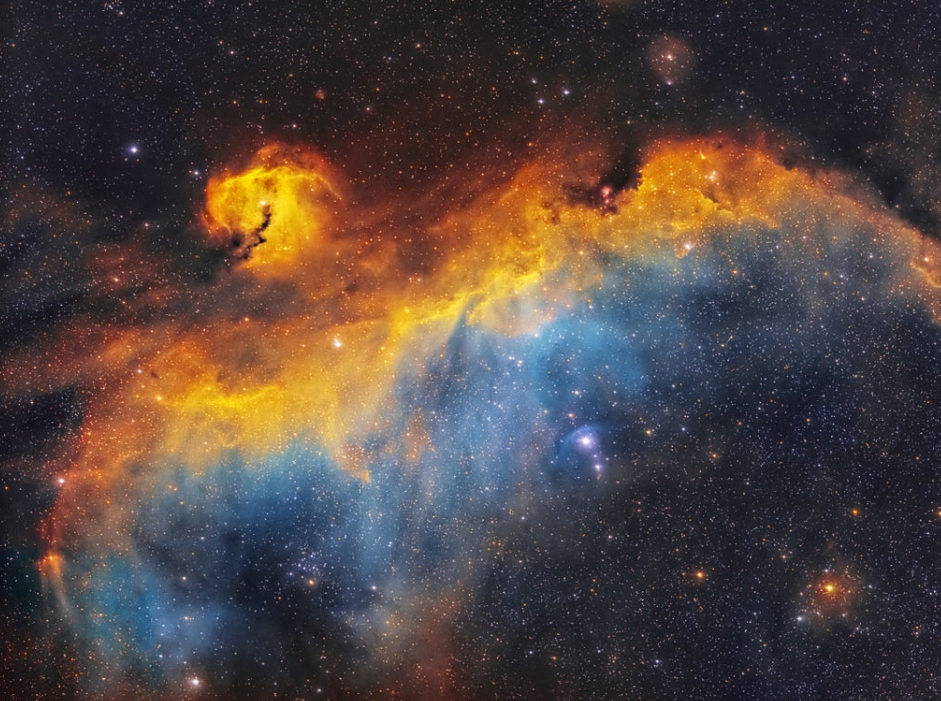
Map of the radio telescopes used to image Messier 87 at 3.5 millimetres in the 2018 Global Millimetre VLBI Array (GMVA) campaign. There could also be a wind blowing out, causing turbulence and chaos around the black hole.” This could mean that there is more than just gas falling in. Kazuhiro Hada from the National Astronomical Observatory of Japan adds: “We also find something surprising in our data: the radiation from the inner region close to the black hole is broader than we expected. As a result, we concluded that the larger extent of the ring is associated with the accretion flow.” Keiichi Asada of Academia Sinica, Institute of Astronomy and Astrophysics explains: “To understand the physical origin of the bigger and thicker ring, we had to use computer simulations to test different scenarios. It consumes matter at a low rate, converting only a small fraction of it into radiation. They also tell us something about the nature of the black hole itself: it is not very hungry. The new observations, at a wavelength of 3.5 mm, reveal more details about the location and energy of these electrons. The light from M87 is produced by the interplay between highly energetic electrons and magnetic fields, a phenomenon called synchrotron radiation. “But now we can see how the jet emerges from the emission ring around the central supermassive black hole and we can measure the ring diameter also at another (longer) wavelength.”Īnimation showing how the EHT image of M87* combines with the image from the GMVA, where the central black hole can be seen together with the birth of the relativistic outflow. We do indeed see the triple-ridged jet that we knew about from earlier VLBI observations,” says Thomas Krichbaum from the Max Planck Institute for Radio Astronomy (MPIfR) in Bonn. “With the greatly improved imaging capabilities by adding ALMA and GLT into GMVA observations, we have gained a new perspective. This diameter is 50 percent larger than what was seen in observations by the Event Horizon Telescope at 1.3 mm, in accordance with the expectations for the emission from relativistic plasma in this region. The diameter of the ring measured by the GMVA is 64 microarcseconds, which corresponds to the size of a small (5-inch/13-cm) selfie ring light as seen by an astronaut on the Moon looking back at Earth. The participation of ALMA and GLT in the GMVA observations and the resulting increase in resolution and sensitivity of this intercontinental network of telescopes has made it possible to image the ring-like structure in M87 for the first time at the wavelength of 3.5 mm. The inset shows a magnification of the inner region obtained with the super-resolving SMILI method, revealing the ring shape with a diameter of 64 microarcseconds, which corresponds to 8.4 Schwarzschild radii. The large image depicts the jet and central ring as reconstructed by the standard CLEAN method. GMVA+ALMA image of the central black hole region in Messier 87 obtained on April 14-15, 2018 at a wavelength of 3.5 mm. This gives us a more complete view of the physical processes acting near the black hole,” he added.

This shows that the material falling into the black hole produces additional emission that is now observed in the new image. “The ring that we have seen before is becoming larger and thicker at 3.5 mm observing wavelength. The surrounding material is thought to fall into the black hole in a process known as accretion. “Previously we had seen both the black hole and the jet in separate images, but now we have taken a panoramic picture of the black hole together with its jet at a new wavelength,” says Ru-Sen Lu, from the Shanghai Astronomical Observatory and leader of a Max Planck Research Group at the Chinese Academy of Sciences. Future observations will study its time evolution and provide multi-color radio light images. Surprising findings suggest possible winds causing turbulence around the black hole. Dagnello (NRAO/AUI/NSF)Ī panoramic image of the M87 black hole and its jet has been captured at a new 3.5 mm wavelength, revealing more details about the surrounding material and ring-like structure.

The image, captured with the help of ALMA and GLT telescopes, has improved resolution and sensitivity, allowing for better understanding of the surrounding material, known as accretion, and the ring-like structure of the black hole. Researchers at the Shanghai Astronomical Observatory have taken a panoramic image of a black hole and its jet in Messier 87 (M87) at a new 3.5 mm wavelength. This artist’s conception shows a close-up view to the accretion flow and the jet emerging from black hole region in Messier 87.


 0 kommentar(er)
0 kommentar(er)
